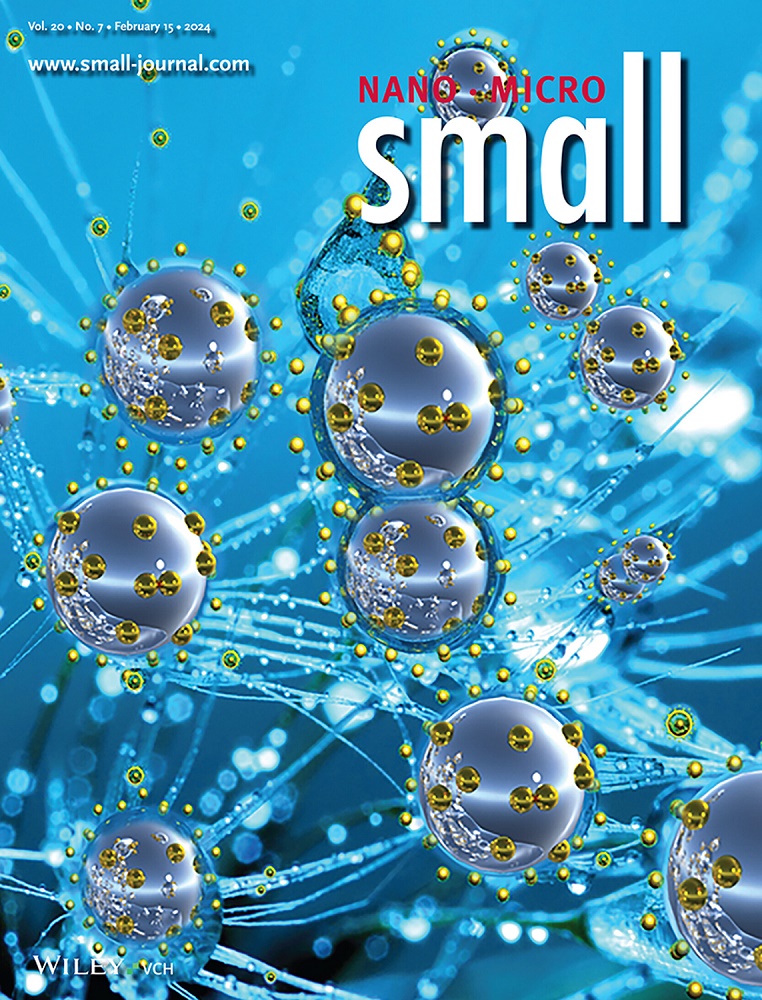通过微相分离“接枝”木聚糖-g-烯丙基缩水甘油醚增韧PEG水凝胶的聚合物:DLP 3D打印中的热响应和光反应分子组装。
IF 13
2区 材料科学
Q1 CHEMISTRY, MULTIDISCIPLINARY
引用次数: 0
摘要
在热敏聚合物的大分子设计中利用天然衍生的生物聚合物为功能材料提供了可持续和可生物降解的智能构建块。本文报道了一种新的木聚糖-g-烯丙基缩水甘油酯醚(木聚糖-g- age)接枝聚合物,它具有自组装和光聚合的热响应性和光反应性。这项研究强调了一种创新的使用方法,即去分枝木聚糖,一种化学工程的β-1,4连接木糖的线性多糖,作为接枝聚合物的骨架,它允许更大程度的侧链空间配位比类似的纤维素。在氢键重组和疏水效应的诱导下,木聚糖-g- age在温度高于其下限临界溶液温度(LCST)时,由溶剂化的螺旋链转变为自组装的中微球。当将木聚糖-g-AGE用于光树脂中,通过DLP 3D打印制备几何保真度良好的水凝胶时,由于可用的AGE部分交联密度更高,交联速率更快,溶剂化的木聚糖-g-AGE使聚乙二醇(PEG)水凝胶硬化,而自组装的木聚糖-g-AGE使PEG水凝胶增韧效果更好。这归功于“双化学独立结构域”策略,巧妙地结合了PEG的硬结构域和自组装木聚糖-g- age的软结构域。在DLP打印中,将二维MXene片掺入水凝胶基质中制备导电水凝胶,作为可穿戴应变传感器表现出优异的性能。本文章由计算机程序翻译,如有差异,请以英文原文为准。
"Grafting-to" Polymers of Xylan-g-allyl Glycidyl Ether Toughen PEG Hydrogel via Microphase Separation: Thermoresponsive and Photoreactive Molecular Assembly in DLP 3D Printing.
Utilizing naturally derived biopolymers in the macromolecular design of thermoresponsive polymers offers sustainable and biodegradable smart building blocks to functional materials. Here, a novel graft polymer of xylan-g-allyl glycidyl ether (xylan-g-AGE) that is thermoresponsive to self-assemble and photoreactive in photopolymerization is reported. This research highlights an innovative use of the debranched wood xylan, a chemically engineered linear polysaccharide of β-1,4-linked xylose, as the backbone in grafting polymer, which allows a greater degree of spatial coordination for sidechains than the analogous cellulose. Induced by the reformation of H-bonds and hydrophobic effect, xylan-g-AGE transits from solvated coil chain to self-assembled mesoglobules upon the temperature change above its lower critical solution temperature (LCST). When xylan-g-AGE is used in photoresins to fabricate hydrogels with good geometric fidelity via DLP 3D printing, solvated xylan-g-AGE stiffens the polyethylene glycol (PEG) hydrogel strongly, due to higher crosslink density of available AGE moiety and faster crosslinking rate, while self-assembled xylan-g-AGE toughens the PEG hydrogel better, attributed to the strategy of "dual chemically independent domains" that smartly combines tough domain of PEG and soft domain of self-assembled xylan-g-AGE. Conductive hydrogel is fabricated by incorporating 2D MXene sheets into this hydrogel matrix in DLP printing, which demonstrates superior performance as wearable strain sensors.
求助全文
通过发布文献求助,成功后即可免费获取论文全文。
去求助
来源期刊

Small
工程技术-材料科学:综合
CiteScore
17.70
自引率
3.80%
发文量
1830
审稿时长
2.1 months
期刊介绍:
Small serves as an exceptional platform for both experimental and theoretical studies in fundamental and applied interdisciplinary research at the nano- and microscale. The journal offers a compelling mix of peer-reviewed Research Articles, Reviews, Perspectives, and Comments.
With a remarkable 2022 Journal Impact Factor of 13.3 (Journal Citation Reports from Clarivate Analytics, 2023), Small remains among the top multidisciplinary journals, covering a wide range of topics at the interface of materials science, chemistry, physics, engineering, medicine, and biology.
Small's readership includes biochemists, biologists, biomedical scientists, chemists, engineers, information technologists, materials scientists, physicists, and theoreticians alike.
 求助内容:
求助内容: 应助结果提醒方式:
应助结果提醒方式:


